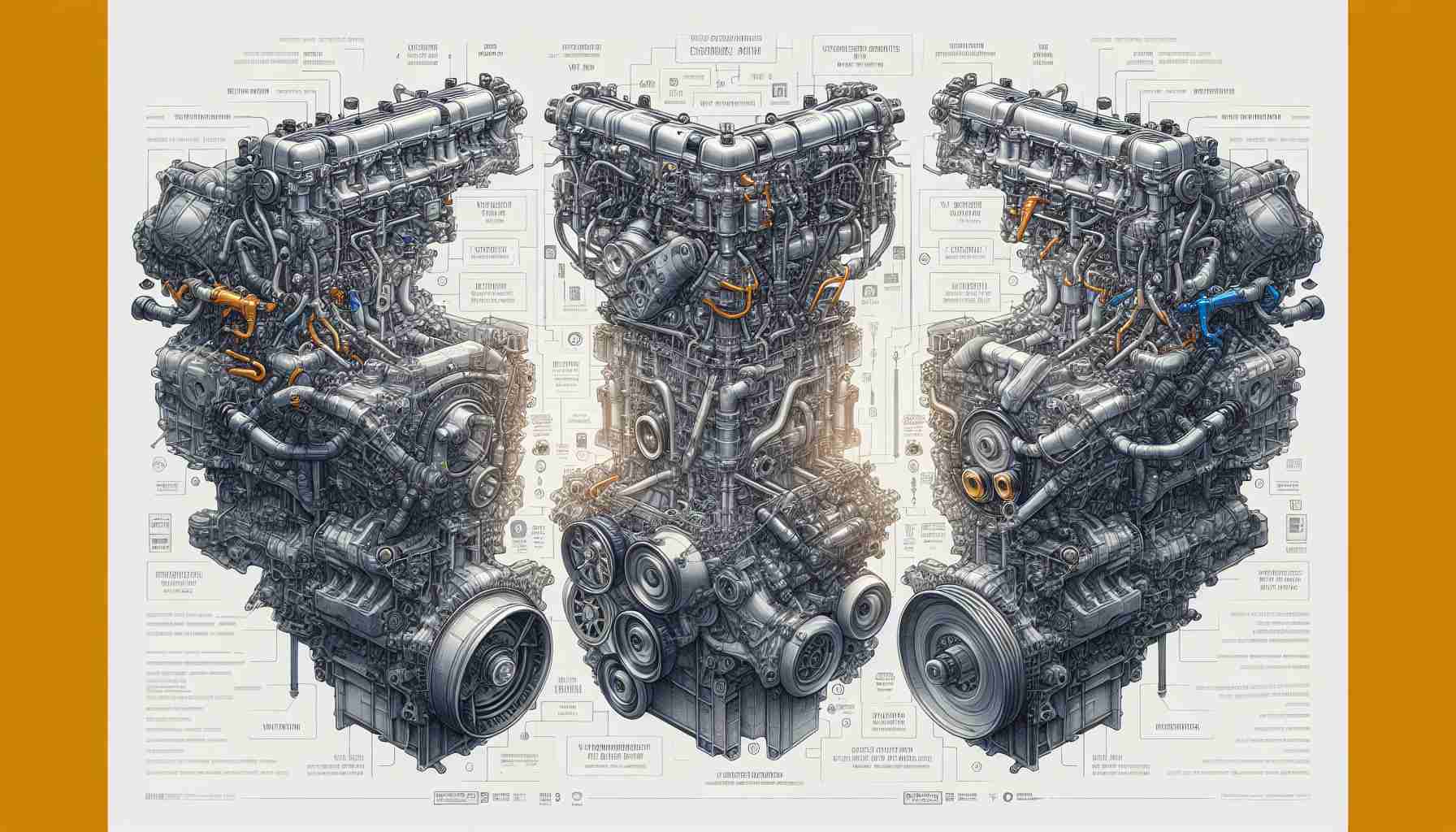Nissan’s VR30 and VR38 engines, both powerful six-cylinder models, are designed for high performance, but they differ markedly in their specifications and fuel delivery systems. The VR30 engine boasts a displacement of 3.0 liters, compared to the 3.8 liters offered by the VR38, making the larger engine inherently more potent.
Both engines utilize twin-turbo technology and are constructed with all-aluminum configurations, but nuanced differences exist in their cylinder dimensions and stroke lengths. The VR30 features cylinders with a diameter of 86 mm and an identical stroke, while the VR38 showcases a wider bore at 95.5 mm and a stroke of 88.4 mm. Notably, the VR30 integrates exhaust manifolds that strategically position the catalytic converter closer to the engine, thereby enhancing efficiency by minimizing emissions during initial start-up.
When it comes to fuel injection, a key layering distinction manifests. The VR30 utilizes direct fuel injection, ensuring fuel is metered precisely into the combustion chamber, which optimizes performance and efficiency. Conversely, the VR38 employs electronic sequential multi-port fuel injection, allowing for a different approach to fuel delivery.
As for power output, the VR30 can produce up to 400 horsepower, while the VR38 surpasses this, generating an impressive 565 horsepower in its standard form. The advanced engineering behind both engines illustrates Nissan’s dedication to performance, making each suitable for distinct applications within their fleet.
Comparative Analysis of Nissan’s VR30 and VR38 Engines
Nissan’s VR30 and VR38 engines represent cutting-edge engineering in the high-performance automotive sector. Both engines are tailored for enthusiasts seeking exhilarating driving experiences, yet they target different performance scales and vehicle applications. This article delves deeper into the features, advantages, disadvantages, and notable distinctions of these robust powertrains while addressing common questions and challenges associated with them.
Engine Architecture: Both the VR30 and VR38 employ a unique V-engine architecture which enhances performance efficiency and engine balance. The VR30 is often utilized in models like the Infiniti Q50 and Q60, emphasizing a balance between performance and everyday usability. In contrast, the VR38, found predominantly in the iconic Nissan GT-R, is engineered for extreme performance scenarios, including track use.
Tuning and Adaptability: The VR30 is recognized for its considerable tuning potential, making it a popular choice among aftermarket modifiers. The VR38, while already exceptionally powerful in its stock form, also offers significant upgrade options but has a more niche audience focused on high-performance racing.
Common Questions and Answers
1. What are the weight differences between the two engines?
The VR30 engine typically weighs around 150 kg, while the VR38 weighs approximately 180 kg. The lighter weight of the VR30 contributes to better handling dynamics in applications where agility is crucial.
2. How do the warming up and efficiency procedures differ?
The VR30’s placement of the catalytic converter close to the exhaust outlets improves warm-up times and emissions performance, whereas the VR38, due to its design focus on maximum power, may experience longer warm-up periods, which can affect emissions during initial operation.
3. What are the maintenance considerations for each engine?
Both engines require specific maintenance protocols, but the VR30 tends to be more forgiving regarding oil changes and service intervals due to its simpler fuel injection system. The VR38’s more complex twin-turbo setup and higher power output necessitate more regular maintenance checks.
Key Challenges and Controversies
One of the primary controversies revolves around the inherent trade-offs between performance and everyday drivability in both engines. The VR30’s lower power output offers improved fuel efficiency and usability in daily driving scenarios, while the VR38 delivers thrilling speed but sacrifices some practicality due to its focus on raw power. Moreover, there have been debates over the reliability of the VR38 during extended high-performance use, with some owners reporting increased wear and tear on engine components.
Advantages and Disadvantages
Advantages of the VR30:
– Excellent balance between power and efficiency, ideal for daily driving.
– Greater tuning flexibility appeals to performance enthusiasts.
– Lower weight aids in vehicle handling.
Disadvantages of the VR30:
– Power output may be insufficient for some high-performance applications.
– Less exclusive than the VR38, which may impact desirability among purists.
Advantages of the VR38:
– Exceptional power output suitable for high-performance racing applications.
– Established pedigree as part of the GT-R lineage, enhancing brand appeal.
– Advanced technologies integrated for enhanced performance capabilities.
Disadvantages of the VR38:
– Heavier weight impacts vehicle handling and efficiency.
– Higher maintenance and operational costs associated with extreme performance engines.
Conclusion
In conclusion, both Nissan’s VR30 and VR38 engines have their unique merits and challenges, catering to different segments of the performance-driven automotive market. The ongoing evolution of these engines underscores Nissan’s commitment to innovation and excellence in automotive engineering.
For more detailed information on Nissan’s engineering advancements, you can visit the Nissan Global website.














